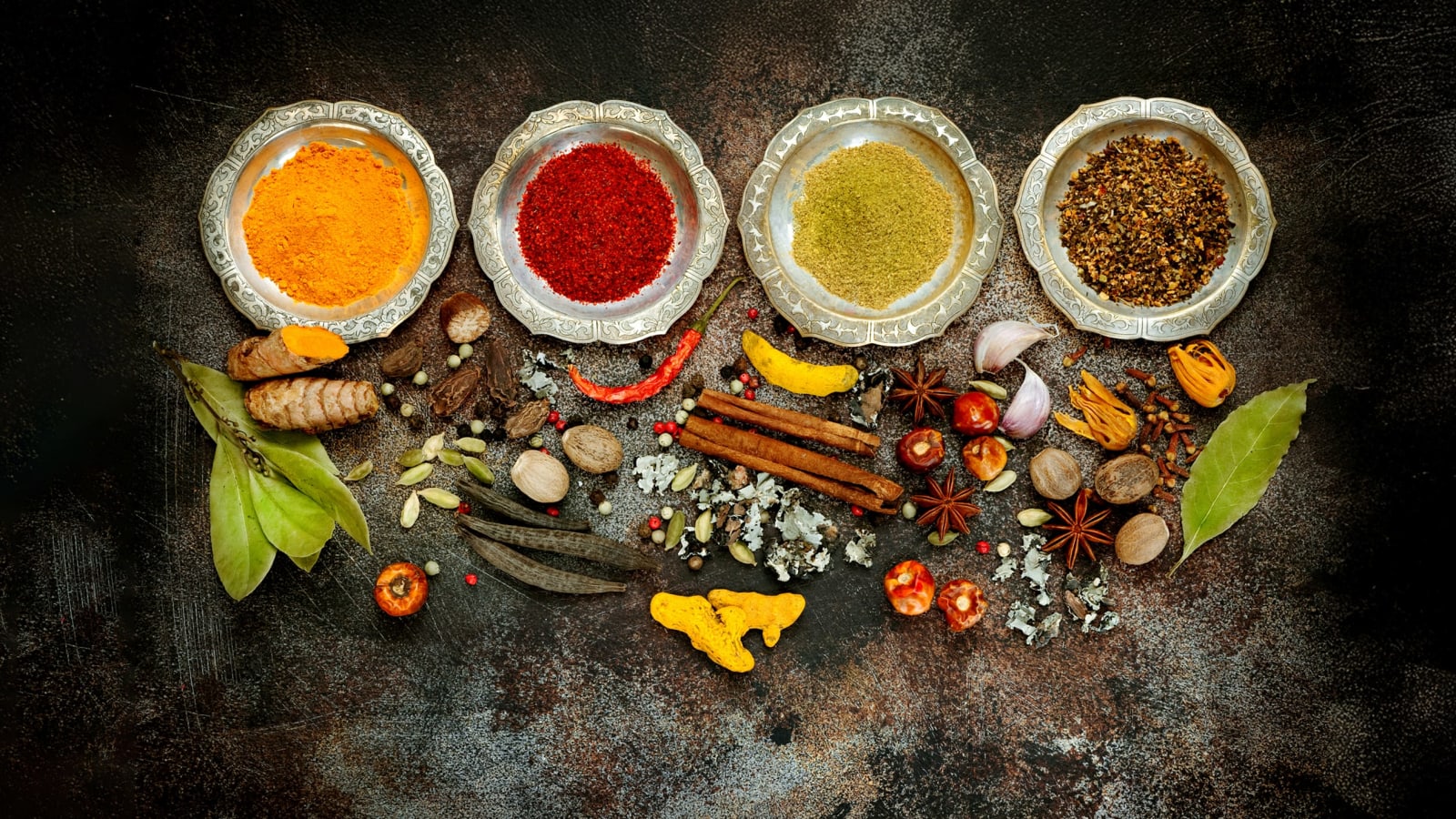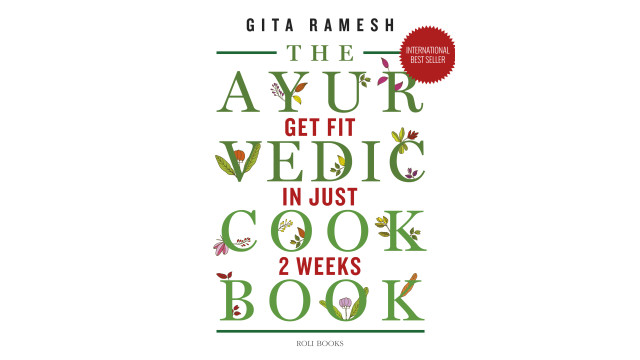Healing Ayurvedic Diet

Ayurveda is a science of holistic health. It is a traditional system of diet and medicine that originated in India and has been practiced for more than 3000 years. It is also described as the “knowledge of life.”
An Ayurvedic diet is not a reductive nutritional plan, or a food regime for weight loss or specific diseases, but an approach to complete wellbeing based on one’s individual health needs. It is a system based on the belief that good health and wellbeing depend on the balance of the body's humors or functional principles. In Ayurveda, they are three doshas (vata, pitta, and kapha), also called prakriti, which are aligned to combinations of the five elements: earth, water, fire, air, and ether (sometimes called space). Vata is aligned to ether and air, pitta to water and fire, and kapha to water and earth.
Dosha & Rasa
According to Gita Ramesh, author of The Ayurvedic Cookbook, eating specific foods or following certain diets in Ayurveda is based on “understanding the individual’s unique doshic constitution and imbalances.” Ergo, what’s good for one person’s constitution may not be suitable for another.
For the New York-based Ayurvedic scholar Dr Bhaswati Bhattacharya, “Ayurveda reminds us that foods are never bad or good. They are simply substances with properties, some of which are bad for one person, but helpful to another. The aim is to eat according to your ability to digest and to eat what your individual body-mind needs.”
Research has shown definite “patterns of blood chemistry, genetic expression, physiological states, and chronic diseases associated with each dosha type.” For example, in Ayurveda, foods are characterized by guna, which may correspond to biological characteristics. Some foods are considered heating, others cooling; some are dry while others are moist.
Another important aspect of Ayurveda’s approach to food is through rasa or the taste of a substance and its effect on the body and mind. Divya Alter, New York-based Ayurvedic specialist and author of Joy of Balance, writes that “While the emerging science of neurogastronomy continues to research our taste receptors, we can turn to the Ayurvedic texts that have described the attributes and effects of each of the six tastes.”
Ayurveda recognizes six primary rasas or tastes: sweet, sour, salty, pungent, bitter, and astringent. In Ayurveda, each of these rasas consist of a composition of the same elements that form doshas: water, earth, air, ether/space, and fire.
Nutritionist and dietitian, Keri Romerdahl finds, “The notion of balance and harmony in Ayurveda is appealing. According to Ayurveda if you are overeating or craving one flavor profile you can balance that by eating the opposite flavor on the flavor profile wheel.”
Roundglass teacher and Ayurvedic expert Moina Oberoi says, “A healthy diet should have a balance of all six rasas in a meal. The proportion of each rasa will depend on the individual’s dosha to absorb nutrition effectively. We can balance the elements in our body with the elements in our food by being mindful of how these rasas make us feel — and eat intuitively for our individual constitution.”
Moina Oberoi's Eggplant Satay highlights the pungent rasa
Here are some examples of foods representative of each of the six primary tastes in Ayurveda:
• Sweet (Madhura): Grains like rice and wheat, milk, ghee, sweet fruit (bananas, apples), sweet vegetables (beets, sweet potatoes), nuts and seeds. These are considered strength-building and nourishing foods that are necessary for growth and satiety.
• Sour (Amla): Fruits such as lemons, limes, berries, pineapples, fermented foods like yogurt and pickles, cheese, vinegar, and tamarind. These are digestive foods in Ayurveda and may help to break down heavy dishes.
• Salty (Lavana): Salt and salty foods such as seaweed, black olives, cured foods, and soy sauce. These help enhance the taste of food, boosting appetite.
• Pungent (Katu): Ginger, garlic, onion, chiles, peppers, cloves, and mustard. These are spicy and stimulating foods that help to absorb and transport nutrients in the body.
• Bitter (Tikta): Leafy greens (kale, spinach, dandelion greens), bitter herbs (neem, fenugreek), coffee, eggplant, turmeric, broccoli rabe and bitter gourds. These are called palate cleansers and help to eliminate toxins from the system.
• Astringent (Kashaya): Legumes (lentils and beans), plantains, asparagus, and tannin-rich foods such as tea and red wine. These foods help in the absorption of nutrients by the body and balance excess moisture.
According to Alter, choosing healthy ingredients according to Ayurveda empowers you “to develop a deeper, exciting connection with whole, plant-based foods.”
Healthy ingredients
According to yoga guru Hansaji J. Yogendra, author of Saatvik Cooking, “You become what you eat.” For most people, Ayurveda usually recommends a sattvic diet, which can also be lacto-vegetarian with fresh whole foods that are lightly cooked or sometimes eaten raw. Here are some examples:
• Grains & Millets: Rice, wheat, oats, quinoa, and finger millets are considered nourishing and energy-building.
• Legumes: Lentils, beans and chickpeas are nutritious sources of plant protein, and helpful for strength and stamina.
• Vegetables: Root vegetables, gourds, squashes, pumpkin, okra, moringa, sprouts, fenugreek leaves and other leafy greens are commonly used in Ayurvedic cooking for gut-friendly fiber and essential nutrients.
• Fruits: Custard apples, pomegranates, apples, bananas, pears, and berries are part of an Ayurvedic diet. They are refreshing and cooling foods.
• Nuts & seeds: Nuts and seeds such as coconuts, almonds, cashews, and flaxseeds are commonly used in Ayurvedic cooking. They are considered to be satiating and nourishing.
• Herbs & Spices: A wide variety of spices are commonly used in Ayurvedic cooking, including turmeric, ginger, cinnamon, black pepper, cardamom, coriander seeds, and fennel. These have a range of medicinal, antioxidant, and anti-inflammatory qualities.
• Ghee & Milk Products: Ghee is clarified butter and is used in most regional Indian cooking. It has high concentrations of healthy fats, like omega-3 fatty acids and vitamin E.
• Sweeteners: Raw honey, jaggery, and dates are considered natural foods — and better for you than processed sweeteners.
According to Alter, choosing healthy ingredients aligned to an Ayurvedic diet, helps you “develop a more intimate relationship with the ingredients and satisfy you physically, mentally, and emotionally.”
Ayurveda and healing
“Ayurveda truly embraces diversity, and thus applies a diverse, customized approach to healing each individual,” writes Alter. This can be done through a variety of means, including diet, lifestyle changes, and the use of herbs and other natural remedies. Alter explains, “Ayurvedic food is not a set diet, but an evolving, personalized way of eating aimed at maintaining balance or overcoming a disease.”
Ayurvedic diets and foods are designed to support proper digestion, gut health, and promote the absorption of nutrients. As Dr Bhattacharya says, “You are not what you eat, but what you digest.”
According to Ayurveda, the body has the natural ability to heal itself and maintain good health, and the foods we eat can play a key role in supporting those natural healing processes to promote good health.
Healing begins with balancing the body’s biological needs with the right kinds of foods aligned to season and time.
Key Takeaways
- Explore Ayurveda's healing powers.
- Dinacharya boosts health and immunity.
- Balance dosha and rasa for good health.



